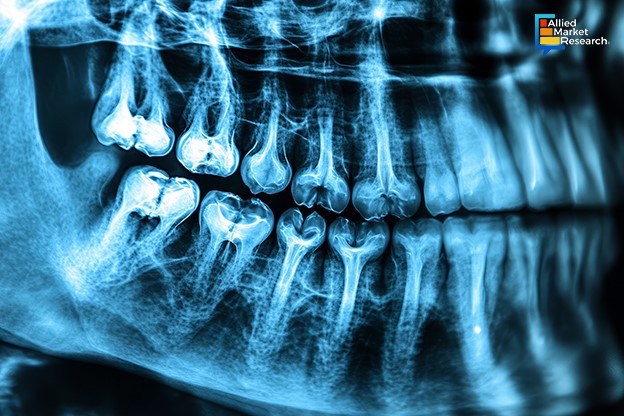Revolutionizing Dental Diagnostics with Advanced Imaging Solutions

26 Mar
2025
Highlights:
- Introduction
- The evolution of dental imaging technology
- Patient-centric imaging solutions
Dental imaging has undergone a significant transformation over the years. Traditional X-rays have given way to advanced imaging systems that offer higher precision, reduced radiation exposure, and improved diagnostic accuracy. Recent developments have introduced technologies that enhance the overall patient experience and provide clinicians with more detailed insights into oral health conditions. The adoption of digital imaging techniques has streamlined diagnosis and treatment planning, allowing dentists to detect potential issues earlier than ever before. Furthermore, these improvements have led to quicker patient turnaround times, improving efficiency in dental practices.
Breakthroughs in Flat Panel DetectorsOne of the latest innovations in dental imaging comes in the form of flat panel detectors (FPDs). These advanced detectors improve image quality and workflow efficiency while minimizing radiation exposure. Detection Technology has recently introduced a trend-setting series of FPDs designed to elevate dental diagnostics. These detectors offer superior image resolution, making it easier for professionals to detect early-stage dental issues and plan treatments more effectively. Unlike traditional detectors, FPDs provide sharper images with greater depth, enabling dentists to make more confident diagnoses. As demand for minimally invasive procedures grows, these detectors play a crucial role in ensuring accuracy while reducing patient discomfort.
Advancements in 3D Intraoral ImagingThe introduction of 3D intraoral optical coherence tomography (OCT) has marked a major milestone in dental imaging. Perceptive has successfully completed clinical trials for the world’s first 3D intraoral OCT dental imaging system, demonstrating its effectiveness in capturing high-resolution, real-time images of dental structures. Unlike conventional 2D imaging, this technology provides a detailed cross-sectional view, enabling more accurate assessments of conditions such as cavities, gum disease, and root canal infections. The ability to visualize soft and hard tissues with high precision enhances diagnostic capabilities and helps customize treatment plans based on the specific needs of each patient. Moreover, with advancements in research work, the application of 3D intraoral imaging is expected to expand, leading to more refined and targeted interventions. The dental imaging industry contributed to $6.4 billion in 2022, and is anticipated to generate $14.7 billion by 2032, showcasing a CAGR of 8.7% from 2023 to 2032.
AI-Driven and Patient-Centric Imaging SolutionsArtificial intelligence is reshaping the landscape of dental diagnostics by making imaging systems smarter and more efficient. AI-driven dental imaging solutions analyze scans with remarkable accuracy, assisting dentists in identifying abnormalities that might go unnoticed in traditional assessments. Moreover, these solutions prioritize patient safety, optimizing radiation levels while ensuring precise diagnostics. In the U.S., AI-powered imaging is improving dental care by making procedures safer, quicker, and more accurate. AI is also improving predictive analysis, allowing dentists to foresee potential dental issues before they develop into severe conditions. Additionally, automated image analysis reduces human error, ensuring that even subtle abnormalities are detected and addressed in a timely manner.
The Shift toward Safer and More Efficient ImagingModern dental imaging solutions focus on improving patient comfort and reducing risks associated with radiation exposure. Many next-generation imaging systems are designed to operate with minimal radiation doses while maintaining high image clarity. These innovations not only enhance safety but also make dental procedures more accessible to patients who might otherwise be hesitant due to radiation concerns. Enhanced imaging techniques have also enabled better patient communication, as clearer images allow dentists to educate patients about their oral health conditions effectively. As a result, patients are more engaged in their treatment plans, leading to improved overall oral care and compliance with recommended procedures.
The Future of Dental ImagingWith AI integration, enhanced imaging techniques, and a growing emphasis on patient-centric solutions, dental diagnostics are expected to become more accurate and efficient. With improvements in dental imaging, dentists are anticipated to get better tools to diagnose and treat oral health issues. Innovations in real-time imaging and cloud-based storage solutions are likely to further revolutionize the field, making data sharing and remote consultations more seamless. Also, it’s expected that the world will get to experience a more preventive and less invasive dental care, ultimately benefiting both patients and practitioners alike.
Connect with our experts today for deeper insights into growth drivers and investment opportunities!

Koyel Ghosh
Author’s Bio- Koyel Ghosh is a blogger with a strong passion and enjoys writing in miscellaneous domains, as she believes it lets her explore a wide variety of niches. She has an innate interest in creativity and enjoys experimenting with different writing styles. A writer who never stops imagining, she has been serving the corporate industry for the last five years.
Avenue: Entire Library membership of Allied Market Research Reports at your disposal
- Avenue is an innovative subscription-based online report database.
- Avail an online access to the entire library of syndicated reports on more than 2,000 niche industries and company profiles on more than 12,000 firms across 11 domains.
- A cost-effective model tailored for entrepreneurs, investors, and students & researchers at universities.
- Request customizations, suggest new reports, and avail analyst support as per your requirements.
- Get an access to the library of reports at any time from any device and anywhere.
Related Post
-
How are Submarine Cables Transforming Global Connectivity with Enhanced User Experience?
-
Endoscopy Procedures: Transformations in Techniques and Applications
-
AI-Powered Video Analytics: How the Product Actually Works for enterprises
-
Painting Robots: Transforming Precision Coating and Creative Applications
-
Innovations in Pharmacovigilance Systems Advancing Patient Safety
-
Understanding Edge Security: Keeping Data Safe Near the Source
-
Exploring the Use and Advancements of 3D Laser Scanners in Professional Applications
-
Reinforcing Industrial Controls with Smarter Tools and Training








